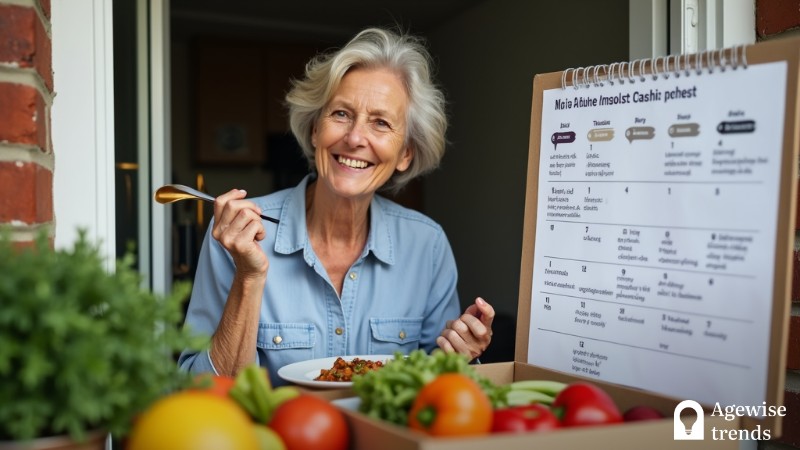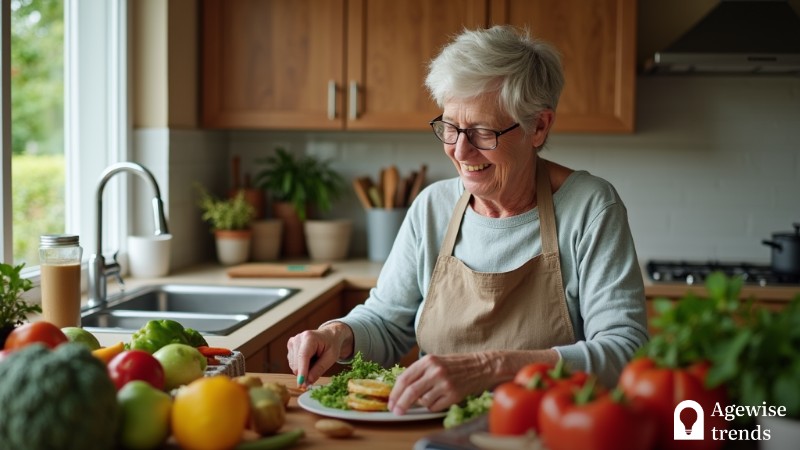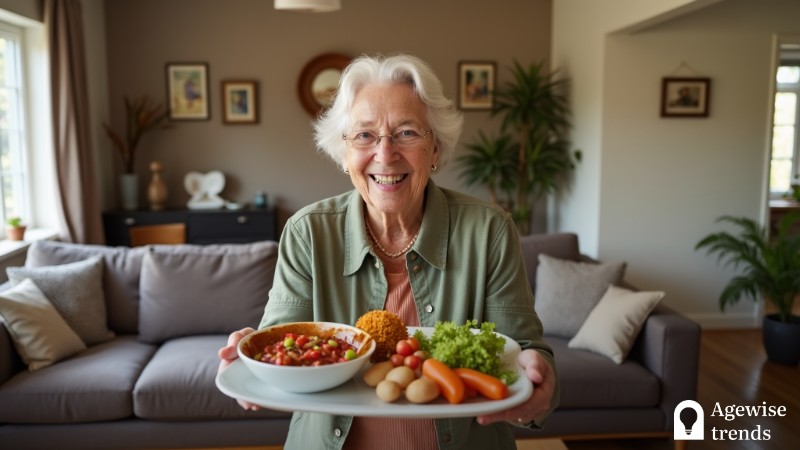As the world of culinary arts continues to evolve, meal kits have emerged as a convenient alternative for those looking to enjoy gourmet dining at home.
From romantic Valentine’s Day dinners to everyday meals, these services offer an array of options tailored to various tastes and skill levels in the kitchen. However, one segment that stands out is food delivery services and meal kits specifically designed for seniors.
Key Takeaways
Meal kits and food delivery services are revolutionizing how seniors maintain a healthy diet by providing convenient, nutritious, and accessible meal options.
- Meal kits cater to seniors’ dietary restrictions and mobility issues by delivering pre-portioned ingredients and easy-to-follow recipes directly to their homes.
- These services prioritize heart-healthy ingredients and low-sodium meals while offering various dietary options such as diabetes-friendly, gluten-free, or vegetarian choices.
- Beyond nutrition, meal kits provide emotional and social benefits through virtual cooking classes and family involvement in meal preparation.
The convenience of meal kits for seniors
Aging can bring challenges such as mobility issues, dietary restrictions, and difficulty preparing meals. These services should cater to these needs by providing pre-portioned ingredients and easy-to-follow recipes. Unlike traditional grocery shopping, which can be physically demanding, these services deliver nutritious, ready-to-cook meals directly to seniors’ doorsteps. This eliminates the stress of meal planning while ensuring a well-balanced diet.
Services like Meals on Wheels have long provided essential nutrition for older adults. However, recent concerns about federal funding cuts highlight the need for sustainable alternatives. Meal delivery services fill this gap, offering reliable options that promote independence and health for seniors.
Nutrition and culinary arts: a balanced approach
The culinary arts emphasize both flavor and nutrition, and this remains true for senior-focused meal kits. These kits prioritize heart-healthy ingredients, low-sodium meals, and easy-to-chew foods to support dental health. Many also cater to dietary restrictions such as diabetes-friendly, gluten-free, or vegetarian options, ensuring that seniors maintain a well-rounded diet without sacrificing taste.
By incorporating fresh, high-quality ingredients, these services make nutritious eating easier and more enjoyable. For instance, some meal kit providers collaborate with dietitians and chefs to create meals that meet specific dietary needs, combining culinary expertise with medical insight. These partnerships ensure that seniors receive meals tailored to their unique health requirements, supporting both physical and cognitive well-being.
Emotional and social benefits
Beyond nutrition, meal kits offer emotional and social benefits. Cooking can be a solitary yet rewarding activity, helping seniors stay engaged and mentally active. Some services even offer virtual cooking classes or community programs, fostering social connections among older adults.
Additionally, family members can take part in meal preparation, turning cooking into a shared experience. This sense of connection and purpose is vital for overall well-being, reducing feelings of isolation and promoting a healthier lifestyle. Engaging in meal preparation can also enhance cognitive function and dexterity, making it a holistic approach to senior health.
For meal delivery services to be effective, they must be accessible to seniors. Simplifying the online ordering process, offering phone-based support, and providing easy-to-read instructions are essential factors. Some companies go the extra mile by including educational materials about nutrition, meal planning, and healthy eating habits.
Affordability is another key consideration. While some seniors may have financial constraints, many services offer discounts, subscription plans, or government assistance programs to make meal kits more budget-friendly. Some non-profit organizations and community programs are also stepping in to subsidize meal kit costs for low-income seniors, ensuring that financial limitations do not compromise nutrition and wellness.
The future of senior meal kits
As technology advances, personalized meal kit options tailored to individual health profiles will likely become more prevalent. AI-driven nutrition analysis, customizable meal plans, and improved logistics will enhance the accessibility and effectiveness of these services.
In conclusion, meal kits and food delivery services are transforming how seniors maintain a healthy diet. By combining convenience, nutrition, and accessibility, these services empower older adults to enjoy balanced, delicious meals while preserving their independence. Investing in these solutions is not just about convenience—it’s about enhancing quality of life and promoting long-term well-being.
As the industry grows, the focus should remain on making these services more inclusive, affordable, and tailored to the specific health needs of seniors.















